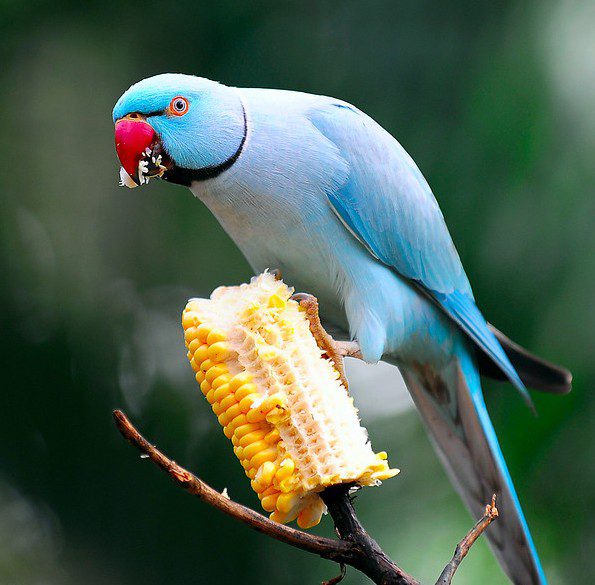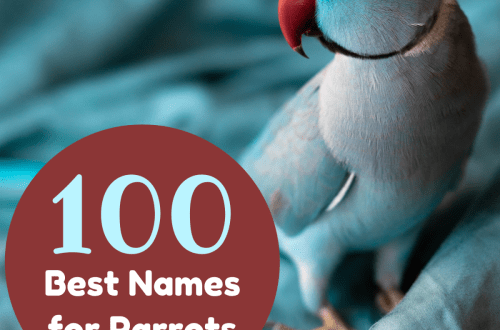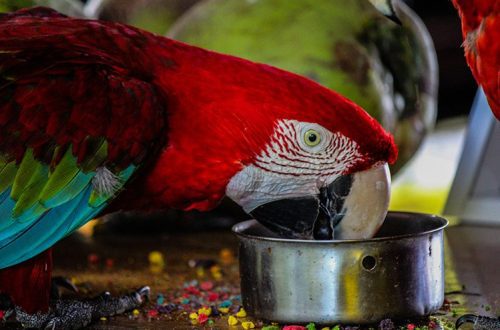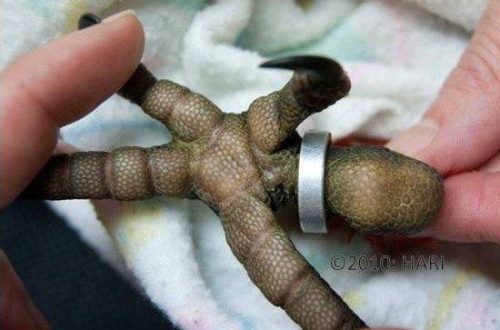
What to feed a parrot
Before you get yourself a feathered comrade, familiarize yourself in advance with how to feed a parrot. Of course, the simplest method is to simply purchase food designed specifically for your type of pet. But even purchased food will not be able to fully satisfy the needs of the bird. Don’t forget vitamins, minerals, supplements, and natural foods. This will help to avoid many health problems for the chick.
Contents
What can and what is strictly forbidden to feed a pet parrot
Not only metabolic problems can arise in your feathered talker. But serious complications in the work of the digestive, cardiac systems, the feather cover suffers. The beak, the scales on the paws, the eyes – everything changes due to improper nutrition. That’s why it’s important to know what to feed your parrot to keep it healthy.
What to feed pet parrots

What to feed a budgerigar
Budgerigars are the most popular among all the chirps that live at home. Therefore, it is not difficult to purchase food for them in a pet store. Everything rests only on the capabilities of your wallet and depends on your preferences (perhaps some kind of firm is well-known). It is very important to study the composition. The feed should contain not only cereals and grains, but also pieces of fruits and vegetables. Over time, through trial and error, you will find the best option for your budgerigar. Not only the composition is important, but also the storage conditions. Even the most high-quality and healthy food will become not only useless, but also dangerous to the health of the budgerigar if it was stored in inappropriate conditions. Before feeding your budgerigar, inspect the grains and pieces of fruit. They should not be damp, smelly or moldy. Watch your pet’s reaction to a particular food. The one that will remain does not like your parrot. And the one that will be eaten completely, of course, to the liking of your chick.
What else can you feed budgerigars? Food, of course, is good. However, birds also need fresh food – fruits and vegetables. Smaller pieces can be pushed between the rods. Many owners do not even know what to feed a parrot other than food and fruit. You can supplement the grain mixture with sprouted grains. Pay attention to the fact that your pet’s diet includes nuts, dried fruits, seeds, but not often and a little. These products are fatty, the liver can not cope. From fruits and berries in the diet, you can use apples, pears, cherries, peaches, cherries, plums and apricots. Just remove the bones. And as vegetable supplements, use kohlrabi, Brussels sprouts, turnips, beans, beets, cauliflower. It is only advisable to pour over boiling water, and hold it for five minutes. Absolutely raw should not be given, and you can not cook for a long time. Otherwise, the vitamins will be destroyed.

How to feed a young parrot so that it grows strong and healthy? Boiled chicken or quail egg. Only a little and extremely rarely – once a week. It’s still heavy food. Adult chirpers do not have to add eggs to the menu, but there are individuals who adore it. So let’s go once every couple of weeks.
What to feed a cockatiel parrot
The general diet for birds is the same for all types of parrots. Therefore, you should not be afraid of the question of how to feed a cockatiel parrot. The menu is practically the same as that used for budgies. You can give children’s vegetable / fruit purees. Just carefully study the composition. No meat, fish, sugar, cream or other prohibited foods.
How to feed a parrot

Now you know how to feed pet parrots. It remains to figure out how to do it correctly. Birds have an accelerated metabolism, so the feeling of hunger returns to them very quickly. As a recommendation, leave the entire daily portion in the feeder. The parrot will decide for itself when to peck, and when to chirp provocatively and mimic you. However, learn the golden rule, which applies not only to birds, but to all animals that you will ever have. Only fresh food should be used as feed, which has not deteriorated, is not expired, has not been stored in the wrong conditions. Remember that the quality of the food should be such that you are not afraid to eat it. Spoiled food will lead to illness, and maybe even to the death of the bird (and any other pet).

Do not leave the parrot for a long time without food (no more than 3 hours) and water. Always keep the feeders and their contents clean. Although the parrot will not shit where it eats, nevertheless make it a rule to wash thoroughly daily (without the use of chemical detergents) both the drinker and the feeder. Try to eat and give at the same time. Let the feathered pet develop a conditioned reflex due to some ritual that you perform before feeding. Perhaps you will call the parrot by name, rattle a box of food, hum something. It doesn’t matter, as long as it’s on schedule so as not to upset the bird’s biological clock.
What not to feed parrots
It is important to know not only what you can feed a parrot, but also what is strictly prohibited. The list of products that are contraindicated for poultry includes exotic fruits (such as mango, papaya, avocado, citrus), spices and fresh herbs (parsley, cilantro, dill, basil and others), some vegetables (potatoes, garlic, onions). Birds should not be fed meat, fish and milk. Feathered pets are herbivores, not predators. Their digestive system cannot cope with the digestion of animal proteins, there are no such enzymes. Some ornithologists still allow parrots to be given a small amount of low-fat cottage cheese, fermented baked milk and kefir once a week. But! No milk, sour cream or yogurt with additives and dyes, no sugar and preservatives. Candied foods are prohibited: fruits, marmalade. No sweets, chocolate and other “human joys”.
What do parrots feed their chicks?
When the birds breed, then you should not worry about what to feed the babies. This task is entirely on the wings of their parents. The newly-made mother “burps” goiter milk into the beak of her cub, which she herself produces. If the mother stops or refuses to feed her brood, then this becomes your problem. Take baby food (only so that there are no forbidden foods), dilute it with boiled water, heat the resulting mixture to 37 degrees. Apply the resulting food to the chick’s beak with a brush.





